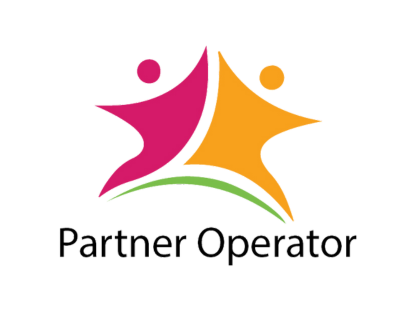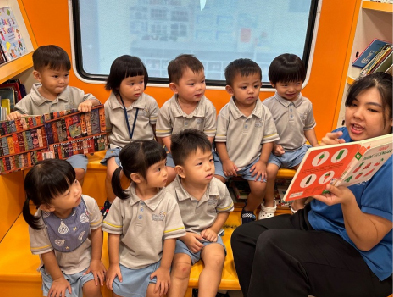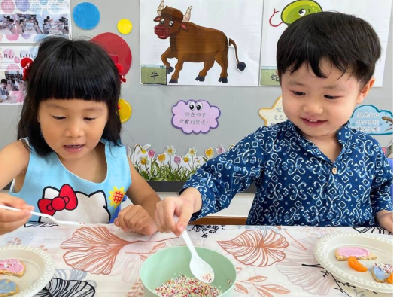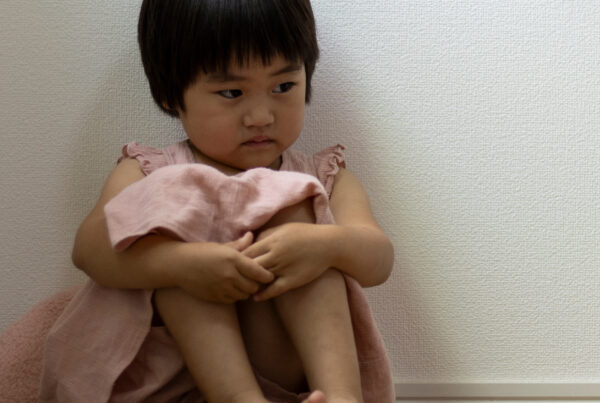There are many preschool providers in Singapore, with both public and private options. The variety can be a boon for parents who want choices, but it can also be a source of confusion.
One of the biggest question marks for parents here is: Do higher fees guarantee a better preschool experience for my child? The dominant perception seems to say so, but is that perception merited?
Today, let us lay it out to see if paying more for childcare truly equates to better value and outcomes for your child. To do so, we need to first break the child care options down into three main types in the country: Anchor Operators, Partner Operators, and private operators.
What are considered Anchor, Partner, or private operators?

1. Anchor Operators (AOPs)
AOPs or Anchor Operators are designated by the Early Childhood Development Agency (ECDA), the governing body for child care services in Singapore. The government provides AOPs with generous subsidies that are passed on to families through lower preschool fees.
By doing this, ECDA aims to provide quality preschool programmes for all Singaporean families without having to “break the bank”. In terms of fees, they promise the lowest out of all three preschool categories.
As part of being an AOP, these preschools must meet certain standards to ensure their services meet the ECDA’s provided guidelines and requirements. For example, they have to follow government guidelines on curriculum, facilities, and teacher-child ratio.
Some examples of popular AOPs are PCF Sparkletots, My First Skool and E-Bridge Preschool.
1. Anchor Operators (AOPs)
AOPs or Anchor Operators are designated by the Early Childhood Development Agency (ECDA), the governing body for child care services in Singapore. The government provides AOPs with generous subsidies that are passed on to families through lower preschool fees.
By doing this, ECDA aims to provide quality preschool programmes for all Singaporean families without having to “break the bank”. In terms of fees, they promise the lowest out of all three preschool categories.

As part of being an AOP, these preschools must meet certain standards to ensure their services meet the ECDA’s provided guidelines and requirements. For example, they have to follow government guidelines on curriculum, facilities, and teacher-child ratio.
Some examples of popular AOPs are PCF Sparkletots, My First Skool and E-Bridge Preschool.

2. Partner Operators (POPs)
POPs or Partner Operators are also selected by ECDA. Similar to AOPs, they receive government subsidies that are passed on to parents through more affordable preschool fees. However, funding provided to POPs is lower, hence when compared to AOPs, the fees that POPs offer are higher – but only at a slight difference of S$40.
Just like AOPs, POPs are required to meet certain ECDA standards and guidelines, such as the achievement of SPARK (Singapore Pre-school Accreditation Framework) as a mark of quality of their child care programmes. However, in terms of operations, they are given more leeway than AOPs. This means that POPs have the ability to provide more specialised programme offerings and carve out their niche in the industry.
Since the introduction of the POP scheme in 2016, Star Learners has been appointed a Partner Operator. As one of the largest POP preschools in Singapore, Star Learners is committed to the following:
- Fee caps for full-day child care and infant care programmes for Singapore Citizen children
- Ensuring fee increases, if any, are kept affordable for all parents
- Invest in improving quality of programmes through SPARK
- Strengthening orgnisational capabilities
- Support opportunities for continual professional development for centre leaders and preschool teachers
In addition to our commitment above, we regularly review our programmes to ensure that they deliver learning outcomes that are holistic and optimal for development in the early years. With Partner Operators like Star Learners, parents are given the perfect option should they desire a unique, high quality curriculum, at affordable rates.

3. Private operators
Private preschools are preschools that receive no subsidies from the government and thus have no obligation to cap their fees. As such, most private preschools have far higher fees than AOPs and POPs, sometimes more than doubling what those other preschool types charge.
Being fully independent, they have the freedom to customise their services extensively. For example, many of them design their learning spaces and programmes to suit their specific approaches or curriculum – and such costs are passed on to the parents.
Some examples of private operators are: MindChamps, MapleBear and Mulberry Learning.
3. Private operators
Private preschools are preschools that receive no subsidies from the government and thus have no obligation to cap their fees. As such, most private preschools have far higher fees than AOPs and POPs, sometimes more than doubling what those other preschool types charge.
Being fully independent, they have the freedom to customise their services extensively. For example, many of them design their learning spaces and programmes to suit their specific approaches or curriculum – and such costs are passed on to the parents.
Some examples of private operators are: MindChamps, MapleBear and Mulberry Learning.

How do AOPs, POPs, and private preschools stack up against one another?

1. Teacher-child ratio
Generally, AOPs, POPs, and private preschools all aim for low teacher-child ratios. In fact, you will see providers from all three categories often going below the ECDA’s stipulated ratios.
Across the board, however, private preschools are more likely to have slightly lower ratios than AOPs and POPs. This is to ensure that the children in their care get more attention or individual guidance from teachers. Of course, with more teachers to support, the fees that one should look to pay will definitely be higher!

2. Centre facilities and experiences
Facilities vary across preschools and are dependent on the size and type of premises. However, AOPs often have the most basic facilities across the three types.
This isn’t to say that AOPs only have the bare essentials in their learning environments. However, POPs and private preschools are more likely to have added equipment and tools for richer learning experiences.
2. Centre facilities and experiences
Facilities vary across preschools and are dependent on the size and type of premises. However, AOPs often have the most basic facilities across the three types.
This isn’t to say that AOPs only have the bare essentials in their learning environments. However, POPs and private preschools are more likely to have added equipment and tools for richer learning experiences.


3. Curriculum
Again, the type of curriculum that preschools offer, no matter AOP, POP or private, all differ from one another. Choose one that you think your child will thrive in!
At Star Learners, we harness the power of stories in our literature-based curriculum to immerse children in rich learning experiences. Using award-winning children’s literature, our team of trained educators present lessons as engaging adventures, and fosters a love of learning in the early years.
Explore our other article on types of curriculum to see what might suit your child’s learning needs best.

4. Enrichment programmes
Similarly, different preschools will have different offerings, but AOPs typically offer the most basic enrichment programmes of all three options, while POPs and private preschools are more likely to offer more specialised experiences.
At Star Learners, we provide a healthy mix of enrichment options that span interests from language to sports. Parents can opt to sign their child up for commonly-known programmes such as Speech & Drama and Abacus, or get them on active ones like Gymnastics or Aikido!
4. Enrichment programmes
Similarly, different preschools will have different offerings, but AOPs typically offer the most basic enrichment programmes of all three options, while POPs and private preschools are more likely to offer more specialised experiences.
At Star Learners, we provide a healthy mix of enrichment options that span interests from language to sports. Parents can opt to sign their child up for commonly-known programmes such as Speech & Drama and Abacus, or get them on active ones like Gymnastics or Aikido!


5. Effectiveness
There are several areas where we can look at the effectiveness of preschool operators. These include parent-preschool engagement, classroom environments, and whether or not the educators are doing their best to help every child meet developmental milestones.
In all of these areas, the three operator types are similar in that they all offer rich developmental experiences. The effectiveness of the preschools isn’t quite determined by their status as an AOP, POP, or private centre.
Instead, it’s determined more by the preschool’s teaching approach and how well it suits your child as a learner. Children can be as comfortable and happy in a private preschool (the most expensive option) as much as in a POP centre (another affordable option) while meeting the same developmental milestones.
Your child’s comfort in the specific preschool, strong parent-preschool relationships, and open communication regarding developmental milestones – to us, these key factors are most important when choosing the right preschool for your child.
Choosing the right preschool for your child
It is true that higher fees may mean the preschool offers more features or services. However, the overall effectiveness and value of the preschool’s programme for your child aren’t determined by its cost.
Preschools with lower fees can also offer a standout experience for your child – and graduands from Star Learners can definitely testify to that. If you want to learn about us in detail or what to expect from a quality Partner Operator preschool, we’ll be more than happy to share. Simply register for a virtual tour of any of our centres island-wide or speak with our team to find out more!





